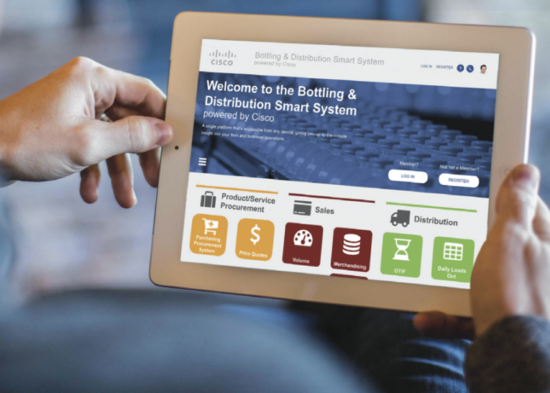About the Author: Gradey Caldwell has been exclusively focused on driving process and costs improvements in the world’s largest manufacturers for over 30 years.
For years I’ve seen manufacturing executives search for innovative ways to lower costs and drive more profits. In my travels, I’ve finally found a process and methodology that works every time. The key is to follow the steps below to connect multiple streams of company data housed in different formats and reporting systems into one easy to read dashboard. Imagine being able to see your key business metrics in real-time on the mobile device of your choice whether you are on the other side of the plant, other side of the country, or the other side of the world. It’s possible using a platform as a service (PAAS) to simplify your key performance reporting and processes – and view them from any device, anywhere, at anytime.

Here’s the process I recommend:
Step 1: Create a process flow diagram of your entire supply chain. Document each function (procurement, receiving, inventory, assembly, etc.), the name of the companies you work with, and their roles (selecting parts to buy, bringing parts into inventory and storing them, building finished goods, using parts from inventory, etc.) You must complete this step before moving forward.
Step 2: Look at all the suppliers you listed and compare how you interact with them. You may find a wide variety of suppliers, each with a different process and timeline of performing their work. This analysis will provide a basis to identify where to cut costs by easily comparing and optimizing where and how you order, receive, pay, and trace parts in your databases. Now you can use PAAS tools to optimize your operations, production schedules, suppliers, and minimize costs.

Step 3: Next, look at all your devices and equipment installed at each of your plants, trucks, or at your customers’ locations. List the various devices/equipment used on each assembly line and each delivery vehicle. Your PAAS tools will enable you to gather key performance data (of your choice) from every device or machine in your entire organization worldwide. Having real-time visibility to each of these will enable real-time analytics and immediate repairs/adjustments that minimize costs.
Step 4: Now look at how your equipment is performing and map out the most efficient process, assembly line, or work group to optimize and accelerate production. You should also identify where bottlenecks are occurring and make improvements.
Step 5: Look at all the factory reporting requirements across different departments and newly acquired companies. If you have to integrate a new system or company, you can use your PAAS tool to maintain the newly acquired systems and avoid a fork-lift (aka rip and replace) of equipment, databases, and applications. You will avoid wasting resources to convert the new acquisition into your processes/systems of reporting.
Display data any way you want it using the Service Exchange Platform (SXP)
At Cisco, we have a PAAS tool called the Service Exchange Platform (SXP) that combines raw information from any source into one consistent report. It allows you to create a user profile with a personalized dashboard and organize metrics, apps, groups, and alerts. All your suppliers, devices, and equipment will be in the same format despite their different pay methods and attributes. We even use it ourselves when we need to access information from the companies we acquire. Our PAAS enables databases across these different companies and throughout our own global organizations to be seen as one consolidated group. And we can add new authorized users to the databases at anytime.
See the platform in action:
For more information, view our Service Exchange Platform webpage.
Love this… Great real life example…
Thanks for sharing this tool. Is this process only for manufacturing type companies or can it be correlated to meet similar data needs of other businesses like retail and direct sales?
Hi,
I need a system that will help me see where my profits can be gained. I like this idea of seeing multi-stream company data in real time. Will look into. Thanks.
Great to hear about this at Cisco. Measure, monitor, manage. The way to business excellence.
I see this framework as something that can be applied to many other verticals. Has this approach been applied & tried with other business verticals? Please share which verticals other than manufacturing?
Thanks for sharing. Your article was very insightful. I agree, w/any framework applied you must measure, monitor & manage. These three M’s together will bring awareness towards the results your directed to achieve.